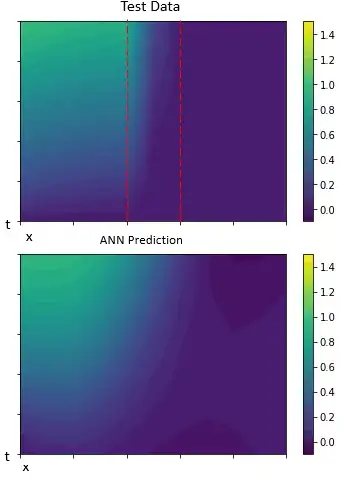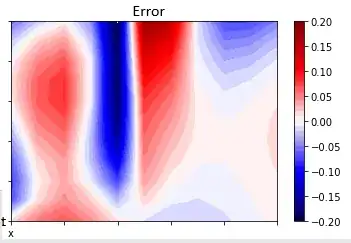Hi I am trying to simulate the flow of water through a porous medium using ANNs. I have managed to get good result when the porous medium is homogeneous, however when it isn't the network seems to struggle to capture sharp changes in the water flow.
In the example below a change in the porous medium properties lead to a "kink" in the test data (obtain using standard numerical techniques in my field) which cannot be captured by my simple neural network.
The neural network has 2 inputs a distance x and a time t, 2 hidden layer with 7 neurons, and an output layer with 1 neuron. The weights and biases are randomly initialized between -1 and 1. I tried increasing the number of neurons in the hidden layer up to 80 without getting any better.
I was wondering what the next step should be, should I add more training data from around the boundaries of the kinked areas ? Should I add a few more hidden layers to my network ?
Thanks !

